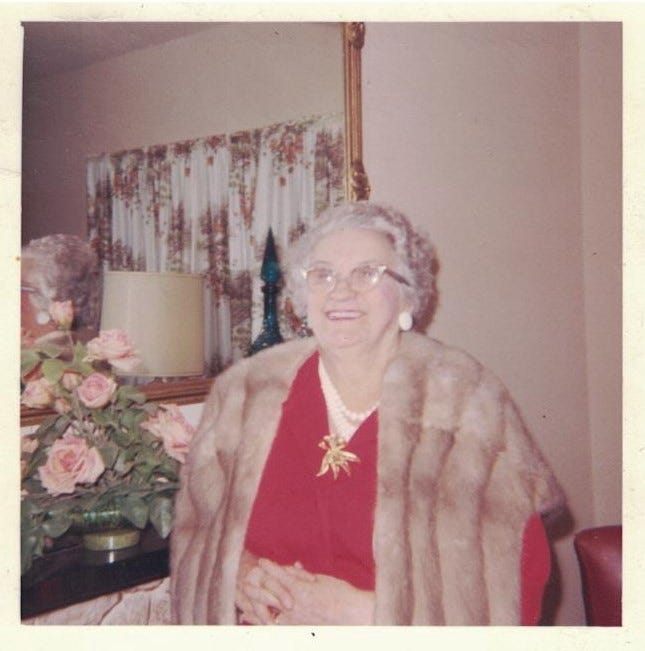The three eccentric Amey brothers
They remained together for decades, never marrying, never leaving their rural West Virginia home until tragedy forced change upon them.
Three Amey brothers — Jacob, Joe, and Edgar — were an unusual trio. Lifelong bachelors, they spent their entire lives together, bound by blood and circumstance, starting out in the Tuscarora section of Berkeley County and then in rural Jefferson County, West Virginia. Their story, however, begins with their father, whose own hardships may offer insight into the path his sons ultimately chose.
A family shaped by loss
William Amey, a Baltimore native, lost his mother as a child and. As a boy in the mid-1800s, his family was forced to board with another household for a time. Like many young men of his generation, he later became a soldier, enlisting on the Confederate side of the Civil War and serving at one point in the Stonewall Brigade.
After the war, he and his wife, Eliza, settled in the Tuscarora region of Berkeley County, where they raised their growing family.
Among their children were Jacob, born in 1866; Joe, born in 1874; and Edgar, the youngest, born in 1881. The Ameys also had five daughters, though two died young, and two other sons. One of those sons, John, met a tragic fate in 1891 when the Cincinnati and St. Louis express train collided with a freight train at Waring Station on the B&O Railroad line. John, a freight train conductor, was found in a ditch beneath the locomotive. He was just 28.
In the face of these tragedies, William continued working — first as a farm laborer and later in life as a telegraph lineman, an unusual career for a man in his 60s. But telegraph lines were critical to West Virginia’s growing railroads and mining industries, and experienced linemen were in demand. By the late 1800s, the family had moved to Jefferson County, settling in the small towns of Kearneysville and Middleway.
The bachelor brothers
As their siblings moved on — one brother settling in Maryland, their sisters marrying and raising families — Jacob, Joe, and Edgar remained together. Well into middle age, they continued to live in their parents’ home, never marrying, never striking out on their own.
After their father’s death in 1912, the brothers and their mother, Eliza, moved in with a local family, Fred and Georgia Timber, in Kearneysville. The Timber household was bustling, with twin daughters and Fred’s elderly mother under the same roof, but the Amey brothers found a place there.

Each brother carved out a different career path. Jacob, the eldest, followed in his father’s footsteps as a telephone lineman before later becoming an electrician. Joe worked as a laborer, while Edgar, sometimes listed as “Edward” in records, became a telegraph operator and lineman for Western Union and the West Virginia Telephone Company. (In 1916, Edgar briefly moved to Philadelphia for work but soon returned home.)

When their mother died in 1922, the brothers continued living together in Middleway. By 1930, Jacob had shifted careers again, now working as a trackman for the B&O Railroad, while Edgar remained with Western Union.
That summer, tragedy struck once more. Jacob was killed by a train, likely while on the job. At 63, he left no will, prompting the court to appoint Old National Bank of Martinsburg to administer his estate — suggesting he had property or financial assets, possibly the family home.
After Jacob’s death, Joe seems to disappear from records. However, a photograph purporting to be of him and Edgar is dated September 1943.
The faded image shows the brothers at ages 69 and 62, both appearing slim but sturdy, their stance suggesting a life of hard work. They are wearing suspenders and high-waisted trousers, which were practical and common for working-class men of that era. The family home, a farmhouse from the late 19th or early 20th century, is a common design for practical rural homes. The lush plant growth around the home, and some of the windows being open, suggest pleasant and mild early-fall weather.
The younger brother, Edgar is listed in the census as living alone in 1940 and 1950 in Middleway, working for the New Deal’s Works Progress Administration. By 1950, he was no longer able to work. He died in 1959 at age 72.
The last of the Ameys
The only Amey sibling to outlive Edgar was their youngest sister, Bessie Amey Foster. Unlike her bachelor brothers, Bessie’s life took many twists and turns.
Married at 19, she and her husband, Jessie, moved from Norfolk, Virginia, to Pittsburgh, where Jessie worked as a railroad conductor. But their marriage was troubled. In 1913, Bessie sued for divorce and spousal support. By then, she had returned to Martinsburg, where she found work at a hosiery mill.
By 1930, Jessie was serving time in an Ohio prison, while Bessie was living in Youngstown, Ohio, working as a waitress. Whether she had followed Jessie to Ohio before his legal troubles or had simply moved for work remains unclear. After his release, Jessie relocated to Washington, D.C., while Bessie remained in Youngstown for at least two decades.
In her later years, Bessie moved once more—this time to Houston, Texas, presumably to live near her daughter, Florence, whose husband was an oil salesman there. It was in Texas that Bessie lived out the rest of her days, passing away in 1973 at age 88.

A legacy of mystery
The Amey brothers' lives followed an unusual trajectory — three men who remained together for decades, never marrying, never leaving their rural West Virginia home until tragedy forced change upon them. Whether shaped by grief, family bonds, or simply a deep-rooted attachment to the land and each other, their story remains one of quiet resilience in the face of loss.




